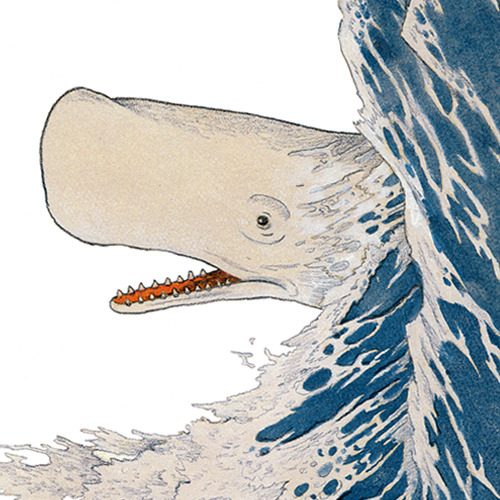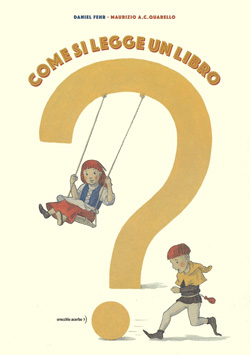< Back to posts
Daniel Fehr
Switzerland

Daniel Fehr is a picturebook author and board game designer. He studied photography at Zurich University of the Arts and the School of Visual Arts in New York, and then he studied German literature and media at Princeton University. Daniel currently lives and works in Winterthur, Switzerland, the town where he grew up.
In this post, Daniel talks about ‘Come si legge un libro?’ (How to Read a Book?) – a story of stories and a book with multiple directions of reading. This unique picturebook is illustrated by Maurizio Quarello and published in Italy by Orecchio Acerbo.
Daniel: With ‘Come si legge un libro?’ (How to Read a Book?) I wanted to create a book that plays with our expectations of reading. At first sight, it might look like an instructional book to teach reading, much like Mortimer Adler’s book from 1940, from which I stole the title. But contrary to his book, which was written to teach critical reading to a popular audience, ‘How to Read a Book?’ quickly runs amok.
The characters in the book speak with you, the reader – no, they command you: Turn the book, shake it, spin it. Is this still reading? Is it playing? Has the reader been set up by the book? In the end, you know something you’ve most likely known all along – that you are supposed to read a book from the front to the back, and holding it the right way.
At the same time, you’ve experienced much more: You’ve experienced that reading can be playful; a game where both you and the book take part. You played with the book, but the book also played with you.
‘How to Read a Book?’, my sixth published picture book, belongs to my series of experimental and rather conceptual picture books, which include ‘Mr Left and Mr Right’, illustrated by Celeste Aires, and ‘A Bola Amarela’ (A Yellow Ball), illustrated by Bernardo P. Carvalho.
In ‘Mr Left and Mr Right’, for example, the two protagonists are trapped on their own pages. One on the left page, one on the right. They try to do everything to get to the other page and, finally, find a solution involving the book itself.
Since these books attempt to play with the medium, I was not just writing a manuscript or a preliminary storyboard. I created very rough prototypes to test how readers reacted before I presented the ideas to my publisher.
The challenge with ‘How to Read a Book?’ was to invite readers to participate: to actually turn the book upside down, contrary to their knowledge of how to read a book. For this, you need to have the idea in your hands to understand how it works. This is still true for the final book; it is a very analogue product. You need to be able to turn it upside down, to shake it, to spin it.
When I write a picture book, I have a clear conception of its setting, what the pictures show and how the book flows. I know which part of the text is placed on which page. I know the rhythm, I know the turns, I know what the book should look like, but it doesn’t yet; it’s still just text and scribblings, very poor scribblings. Without the illustrator, my book is nothing. Good illustrators are not only able to grasp the core of my texts quickly and precisely, but they’re also able to enrich them with their own vision. They transform and rework it until it is one – until it is not my idea anymore, but ‘our’ work.
Maurizio included characters from famous tales, like Grimm’s ‘Hansel and Gretel’ and Ahab from Herman Melville’s ‘Moby-Dick; or, The Whale’. My prototype didn’t include any of these; my figures were simply placeholders – canvases for the illustrator’s imagination. I immediately fell in love with Maurizio’s idea, since these classic characters mirror Adler’s obsession with ‘Great Books’ and mocks it gently.
At the same time, they make you curious: What are they doing in this book? Where are they coming from? What are their own stories? A story is never closed in itself, but always contains further stories. Sometimes you have to invent them yourself, sometimes they already exist. I would be very happy if Maurizio’s and my book could be a starting point for our readers to discover more stories and books.
Illustrations © Maurizio Quarello, Celeste Aires and Bernardo P. Carvalho. Post edited by dPICTUS.
Come si legge un libro? /
How to Read a Book?
Daniel Fehr & Maurizio Quarello
Orecchio Acerbo, Italy, 2018
A story of stories and a book with multiple directions of reading… ‘How to Read a Book?’ features characters from popular fairy tales and a captain from a very famous novel. They all have an appointment on the pages of this book – a bewildering book where up is down and down is up!
If these characters are to have a chance of getting through their story, they’ll need to teach the young reader how this book has to be read…
- Italian: Orecchio Acerbo
- German: Jacoby & Stuart
- French: Editions Kaléidoscope
- Spanish: Editorial Océano
- Turkish: Cinar Yayinlari
- Korean: Miseghy Children’s Press
- Chinese (Simplified): TB Publishing












